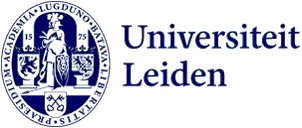
LION Image Awards
On 15 January, the winner of the famed LION Image Award will be announced. Submissions ranged from the famous 3d printed microboat to an eerily abstract graph depicting a Majorana fermion.
The winner will be chosen by a capable jury consisting of LION's management assistents. The lucky winner of this years contest will receive 100 euros, a prominent place in the institutes picture wall (sadly undervisited due to corona) and ... eternal fame. Watch the announcement at the beginning the Joan van der Waals lecture of 15 January.

Trapped Particles
Optical tweezers are real versions of the tractor beam in Star Trek. They employ highly-focused laser beams to trap micrometer sized particles. Arthur Ashkin won the 2018 Nobel Prize for the invention of optical tweezers and their application in biology.
By diffracting the laser beam, we produced many traps simultaneously, and individually controlled them with nanometer resolution. Here, twenty-eight particles are trapped to form the letters LION (Leids Instituut voor Onderzoek in de Natuurkunde). Submitted by Ali Azadbakht

Gal Lemut - Majorana Fermions
Majorana fermions are a special type of quasiparticles which are their own antiparticles. They are formed as a superposition of electrons and holes. This figure shows Majorana fermions formed in a superconductor under the action of a magnetic field.
In such systems, they can form special extended Landau level states. The oscillating pattern in their
wave function amplitude reveals the interference of the electron and hole components. Submitted by Gal Lemut

Peter Neu - Meandering Carbon Nanotubes
Each carbon nanot tube is only 2 nanometers in diameter and about 10 μm long, with a wall consisting of a single atomic layer of graphene. The carbon nanotubes were dispersed in water at a high concentration. When deposited on silicon and left to dry, they bundle together and form meandering abstract shapes.
Towards the top of the picture, we see bundles splitting up, which happens after prolonged exposure to the electron beam of the Scanning Electron Microscope (SEM). The field of view is 140 μm wide. Submitted by Peter Neu

Rachel Doherty - The world's smallest boat
This microboat is 30 micrometres long, about a third of the thickness of a human hair, and can propel itself in solution using a chemical reaction. It was 3D printed and coated with a layer of platinum. The boat uses hydrogen peroxide as fuel, which is broken down by the platinum coating pushing the boat forward. The image was taken with an electron microscope. Submitted by Rachel Doherty

Gallium Bombarded Rice Paddies - Remko Fermin
This false colored electron microscope image might remind you of terraced rice fields that lie above steep cliffs. The unconventional scale bar, measured in lengths of the Covid-19 virus, reveals that we are dealing with a totally different scale. This image was taken after focused ion beam processing, during which a sample is bombarded with highly energetic Gallium ions, to sculpt it into a microstructure, similar to a jigsaw. We needed very high ion currents on this specific sample since the crystal was relatively large, resulting in these randomly formed terraces at the edges (green) and pillars on the side (orange) of the crystal. Submitted by Remko Fermin

Tobias A. de Jong - Atomic Moiré Phases
When combining two atomic lattices with a slight twist, a moiré pattern shows up. This moiré pattern will, quite literally, magnify any shifts between the two atomic lattices. By comparing a Low Energy Electron Microscopy (LEEM) image of the moiré pattern with a reference wave, we can extract the local phase and obtain the local relative shifts of the atomic lattices with a very high precision. Here, this relative phase is shown on top of the moiré pattern of a graphene layer on top of an hexagonal boron nitride layer, curving around a fold in the graphene. Submitted by Tobias A. de Jong
